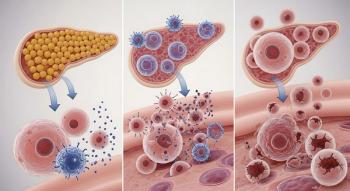
Uncovering the Hidden Potential: CAMs as a Game-Changer in HBV Treatment
Capsid assembly modulators (CAM) work by assembling flawed hepatitis B capsids and preventing the formation of new infectious viruses.
Capsid assembly modulators (CAM) work by assembling defective HPV capsids and preventing the formation of new infectious viruses.
Hepatitis B virus (HBV) is a chronic infection that affects millions of people worldwide. Despite advances in treatment, finding an effective cure remains a challenge. However, recent research has shown promising results with the use of a capsid assembly modulator (CAM). Could this innovative approach be the key to successful HBV treatment?
HBV is a major global health concern, with approximately 257 million people living with chronic HBV infection. Traditional therapies such as nucleos(t)ide analogs, reverse transcriptase inhibitors and interferon-alpha have limitations. They often need to be taken for long periods of time and can have troublesome side effects. Perhaps more importantly, these therapeutic modalities do not lead to a high cure rate as the virus can
Earlier this month in a research article published in
CAMs work by encouraging the assembly of defective HBV
In an adeno-associated virus mouse model of HBV, CAM treatment resulted in a reduction of HBV antigens. A significant reduction in serum HBsAg and HBeAg was observed, along with the clearance of HBsAg, HBc, and HBV cccDNA from the liver, indicating potential efficacy in clearing the virus.
CAM treatment has also been found to restore suppressed innate immune responses against HBV, further enhancing its potential as a therapeutic approach. The researchers noted that gradually eliminating infected cells through CAM-induced apoptosis can lead to immune control or complete elimination of HBV infection. Cell death also promotes the regeneration of uninfected hepatocytes, contributing to the potential for a functional cure. It should be added that it is the process of mitotic regeneration of hepatocytes whereby the HBV episomal DNA is lost.
In an accompanying editorial,
Zlotnick and his co-authors authors noted separate clinical trials of two CAMs, vebicorvir and bersacapavir. Although early achievement in nondetectable viral loads was observed, the therapeutic effect did not hold and HBV reemerged.
Many researchers see CAMs as having the potential to disrupt the assembly of viral core particles, ultimately inhibiting viral replication. This possibility has sparked hope for improved outcomes and a potential cure for chronic HBV infection.
Newsletter
Get the latest industry news, event updates, and more from Managed healthcare Executive.

















































